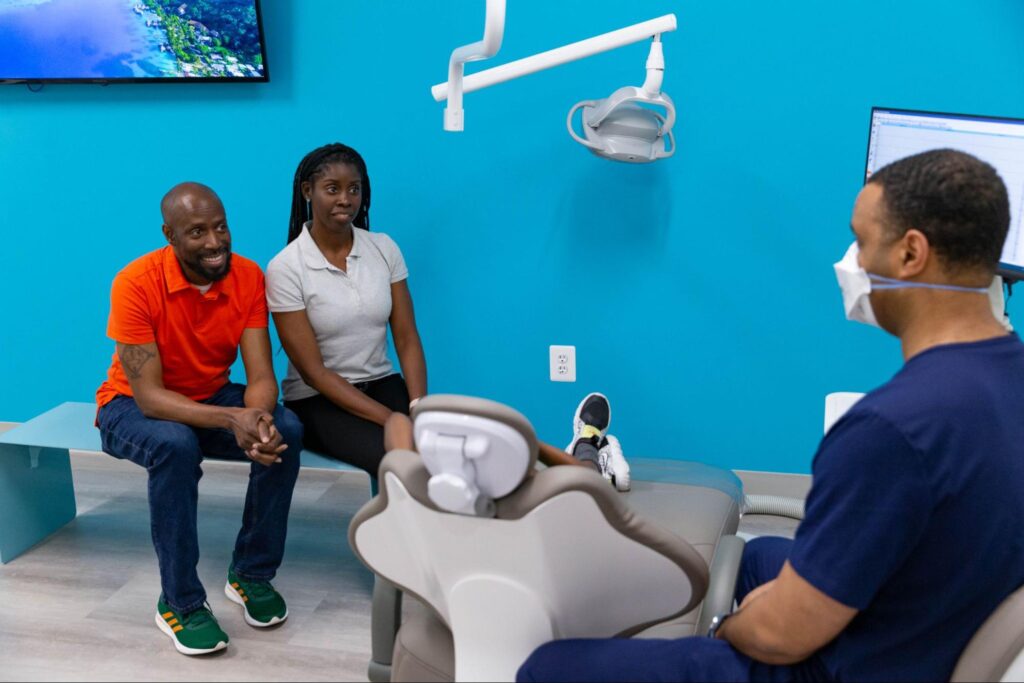Thumb-sucking might seem like a sweet habit when your little one is young, but if it sticks around too long, it can lead to some not-so-sweet challenges for their teeth and jaw. Dr. JC and the team at Ivy City Pediatric and Orthodontics are here to help you turn this habit into a thing of the past while setting your child up for healthy dental development. Let’s discover how orthodontic care can help tackle thumb-sucking and keep those growing smiles on track.
The Surprising Impact of Thumb-Sucking on Growing Smiles
What starts as a comforting habit can leave a lasting impression—literally!
Thumb-sucking may seem harmless at first, but when it continues beyond early childhood, it can cause changes to your child’s dental and facial development. The pressure from a thumb can push teeth out of place, leading to bite issues like overbites or open bites. It can also affect how the upper and lower jaws grow, potentially creating alignment challenges that may require orthodontic attention later.
Beyond dental concerns, prolonged thumb-sucking can even interfere with speech clarity and chewing, making everyday tasks more difficult for your child. These potential effects highlight why addressing the habit early is so important. Up next, we’ll look at when it’s the right time to schedule an orthodontic evaluation to tackle thumb-sucking head-on.

When Should You Consider an Orthodontic Evaluation?
Timing is everything when it comes to addressing thumb-sucking and its effects. While many children naturally stop the habit between ages two and four, it can sometimes stick around longer than expected. Dr. JC at Ivy City Pediatric and Orthodontics recommends scheduling an orthodontic evaluation around age seven, as this is when permanent teeth start to emerge, and the jaw is still developing. This early assessment allows potential issues to be identified before they become more complex.
Signs It’s Time for an Evaluation
- Changes in the Bite: Look for an overbite, open bite, or other noticeable bite changes.
- Shifting Teeth: Teeth moving out of place or gaps appearing unexpectedly may be linked to thumb-sucking.
- Concerns About Jaw Growth: If the upper or lower jaw appears uneven, it’s worth having it checked.
An early visit doesn’t always mean braces are in the near future—it’s more about creating a tailored plan for your child’s needs. With timing sorted, let’s explore the tools and techniques used to help children break the thumb-sucking habit.
Tools and Techniques to Break the Thumb-Sucking Habit
Breaking a thumb-sucking habit can feel like a big challenge, but with the right tools and support, it’s entirely possible. Dr. JC and the team at Ivy City Pediatric and Orthodontics use a combination of orthodontic appliances and positive reinforcement techniques to help children stop thumb-sucking effectively.
Orthodontic Appliances
- Thumb Guards: These small devices are placed in the mouth to make thumb-sucking less satisfying, helping to deter the behavior over time.
- Tongue Cribs: A more advanced option, these appliances create a barrier that physically prevents the thumb from reaching the roof of the mouth.
- How They Work: Both appliances gently encourage kids to stop the habit without causing discomfort, and they’re easy to adjust as needed.
Positive Reinforcement Strategies
- Celebrate Milestones: Reward progress with small incentives like stickers, favorite activities, or verbal praise.
- Create a Habit Tracker: Use a fun calendar or app to track days without thumb-sucking, encouraging children to stay motivated.
Combining these tools with positive reinforcement and clear communication gives children the best chance to move beyond thumb-sucking successfully. Now, let’s explore how parents can provide emotional and practical support to make this transition even smoother.

Supporting Your Child Through the Transition
Helping your child stop thumb-sucking is easier when you combine clear communication, emotional support, and practical steps. Dr. JC and the team at Ivy City Pediatric and Orthodontics recommend the following approaches to make the process smoother:
Confidence Is Key
Talk with your child about why stopping thumb-sucking is important, using language they can understand. For example, “This will help your teeth grow strong and healthy!” Letting them feel included in the plan makes them more likely to cooperate.
Comfort Alternatives
Offer new ways for your child to feel secure:
- A favorite stuffed animal or blanket during bedtime.
- Fun stress-relief tools like a squishy ball or sensory toy.
- Establish soothing bedtime routines, like reading or calming music, to replace thumb-sucking as a source of comfort.
Cheer Them On
Celebrate milestones to keep your child motivated. Whether it’s a sticker chart, extra playtime, or simply words of encouragement, acknowledging progress helps build their confidence.
By providing consistent support and recognizing their efforts, you’re creating a positive environment for success. Up next, let’s explore the long-term benefits of leaving thumb-sucking behind.
The Long-Term Benefits of Breaking Thumb-Sucking Habits
Saying goodbye to thumb-sucking brings lasting benefits to your child’s dental health and overall development. When the habit is addressed early, issues like bite problems or teeth misalignment can often be minimized or avoided altogether.
Beyond dental health, breaking the habit can improve your child’s speech clarity and chewing ability, making everyday tasks like eating and communicating easier. Additionally, addressing thumb-sucking early helps foster confidence, as children won’t have to worry about the visible effects of prolonged thumb-sucking on their teeth or jaw.
Dr. JC and the team at Ivy City Pediatric and Orthodontics are here to help your child embrace these lasting benefits while creating the foundation for a confident and healthy smile.

Thumbs Up for a Brighter Future
Breaking the thumb-sucking habit is a big win for your child’s growing smile and overall confidence. With the help of Dr. JC and the team at Ivy City Pediatric and Orthodontics, your child can leave this habit behind and embrace healthier dental development. Schedule your free consultation at our Washington, D.C. office today and let’s work together to keep those pearly whites thriving!



